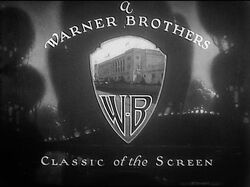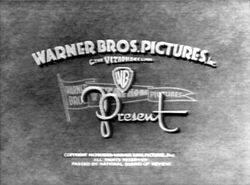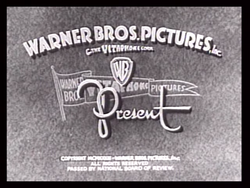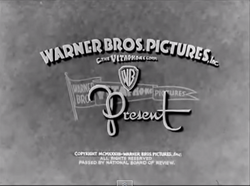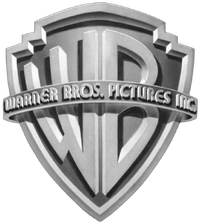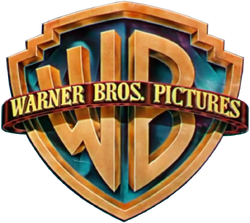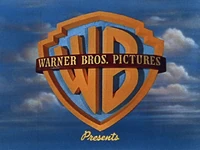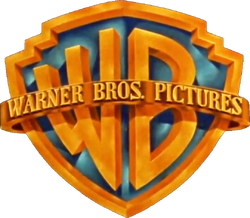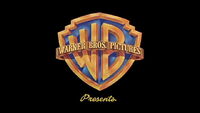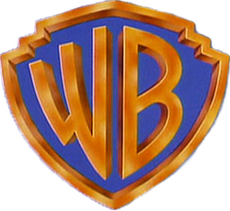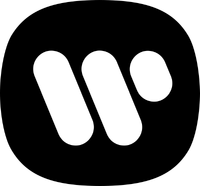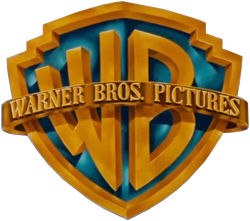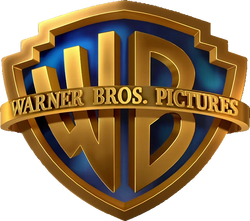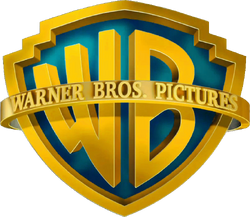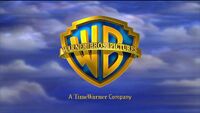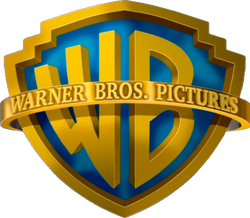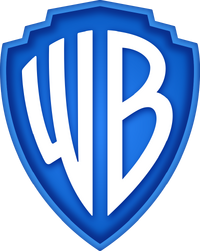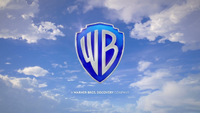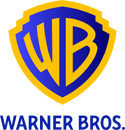| Predecessors
WarnerMedia | Discovery, Inc.
(National Cleaning Contractors | Kinney Parking System | Warner Communications | Time Inc. | Turner Broadcasting System | Discovery Holding Company | Scripps Networks Interactive)
Warner Bros. Entertainment
WB Motion Picture Group:
Warner Bros. Pictures | Warner Bros. Pictures Animation | DC Studios | DC Kids Movies | Cartoon Network Movies | Castle Rock Entertainment | CNN Films | Flagship Entertainment Group | New Line Cinema | Spyglass Media Group1 | Wang Film Productions | Discovery Films
WB Television Group:
Domestic units: Warner Bros. Television Studios | Warner Horizon Unscripted Television | Alloy Entertainment | Blue Ribbon Content | Max Originals | Telepictures | A Very Good Production | Cartoon Network Studios | Cartoon Network Productions | Warner Bros. Animation (Warner Bros. Classic Animation) | Williams Street Productions | The CW3 (Plus | Sports)
International units: All3Media (50%)2 | Cartoon Network Latin America Original Productions | Warner Bros. International Television Production (Australia | Belgium (Eyeworks | Savage Film) | Germany | Netherlands (Blazhoffski | Hollands Licht) | Spain | UK (Renegade Pictures | Ricochet | Twenty Twenty | Wall to Wall | Hanna-Barbera Studios Europe | LazyTown Entertainment)
Other assets:
Fandango Media (assets)11 | The Wolper Organization | Turner Entertainment Co. | Warner Bros. Theatre Ventures | WaterTower Music
DC Entertainment:
DC Comics (Others | Logo Variations) | DC All Access | DC Black Label | DC Collectibles | DC Ink | DC Kids | DC Kids Interactive | DC Kids Movies | DC Universe Infinite | DC Vertigo (DC Vertigo/Other) | DC Zoom | Mad
Warner Bros. Discovery Global Streaming & Interactive Entertainment
General streaming:
Max (Netherlands and Belgium) | Discovery+ (India | UK & Ireland) | Discovery GO (United States | Canada) | Player.pl (Poland) | BluTV | ThreeNow | TuDiscovery.com
Specialty streaming:
Discovery VR | Motor Trend On Demand | Food Network Kitchen
WB Interactive Entertainment:
Warner Bros. Games | Warner Play | WB Games Boston | WB Games Montréal | WB Games New York | WB Games San Diego | WB Games San Francisco | Avalanche Software | Cartoon Network Games | DC Kids Interactive | Adult Swim Games | Monolith Productions | NetherRealm Studios | Portkey Games | Rocksteady Studios | TT Games (Traveller's Tales | TT Games Publishing | TT Fusion | TT Odyssey)
Other assets:
Warner Bros. Digital Networks (OneFifty | Stage 13 | Uninterrupted | IStreamPlanet) | Food.com | Discovery Digital Studios
CNN Worldwide
U.S. domestic networks
CNN
International channels:
CNN International | CNN en Español (US and Latin America, Spanish) | CNN Brasil18 (Brazilian Portuguese) | CNN Chile (Spanish) | CNN Indonesia19 (Indonesian) | CNN-News1820 (India, English) | CNN Portugal31 (Portuguese) | CNN Prima News22 (Czech) | Antena 3 CNN33 (Romanian) | CNN Türk (Turkish) | CNNj23 (Japanese)
Former channels
CNN-D (Germany) | CNN Philippines (English) | CNN+ (TV channel)32 (Spanish) | CNN Airport
Warner Bros. Discovery Networks U.S.
Factual and lifestyle networks:
Discovery Channel (en Español) | American Heroes Channel | Animal Planet | Cooking Channel 5 | Discovery Life | Food Network 5 | HGTV (Hogar de HGTV) | Magnolia Network6 | Science | TLC
Entertainment networks:
Turner Entertainment Networks (TNT | TBS | TruTV | Turner Classic Movies) | Investigation Discovery | HLN | Oprah Winfrey Network | Destination America | Travel Channel
Cartoon Network Group:
Cartoon Network (Cartoonito | Adult Swim (Toonami | Checkered Past)) | Boomerang | Discovery Family7 | Discovery Familia
Home Box Office, Inc.
Television channels:
HBO (On Demand) | HBO 2 | HBO Comedy | HBO Family | HBO Latino | HBO Signature | HBO Zone
Cinemax | Go | 5StarMax | ActionMax | Cinemáx | MoreMax | MovieMax | OuterMax | ThrillerMax
Production studios:
HBO Films | HBO Documentary Films | HBO Entertainment | HBO Enterprises | HBO Kids
Warner Bros. Discovery International
Animal Planet | Boomerang | Cartoon Network | Cartoonito | Discovery Channel | Discovery Kids | DMAX | Discovery Science | Investigation Discovery | TLC
Americas networks:
Canada:
Adult Swim8 | Boomerang8 | Cartoon Network8 | Turner Classic Movies | Cooking Channel8 | Discovery9 | Discovery Science9 | Discovery Velocity9 | Magnolia Network8 | Food Network8 | HGTV8 | Investigation Discovery9 | Oprah Winfrey Network8
Latin America, Carribean and Brazil:
Animal Planet | Cartoon Network | Cartoonito | Cinemax | Discovery Channel | Discovery Science | Discovery Turbo | Food Network | HBO Pack (HBO | HBO 2 | Family | Signature | Mundi | Xtreme | Pop | HBO+) | HGTV | Investigation Discovery | TLC | TNT (Series | Novelas) | Adult Swim | TCM | Warner Channel | HTV | Space | Tooncast | Discovery Home & Health | Discovery Kids (HD) | Discovery Theater HD | Discovery World HD | Golf Channel11
Europe, Middle East and Africa networks:
Western Europe:
UK and Ireland: Adult Swim12 | Boomerang | Cartoon Network (+1) | Cartoonito | Discovery Channel | DMAX | Food Network | Discovery History | Discovery Turbo | DMAX | HGTV | Quest | Quest Red | Really | TLC | TCM Movies
France: Boomerang | Cartoon Network | Cartoonito | Investigation Discovery | TCM Cinéma | TLC | Warner TV (Next)
Benelux: Discovery Channel | Cartoon Network | TLC (NL | BE)
Central Europe:
Germany, Austria and Switzerland: Cartoon Network (Germany | Switzerland) | DMAX | Discovery Channel | HGTV | Tele 5 | TLC | Warner TV (Comedy | Film | Serie)
Hungary: Animal Planet | Cartoon Network | Discovery Channel | Cinemax (HD | 2 | 2 HD) | HBO (HD | 2 | 3)
Other: Cartoonito
Nordics:
Sweden: Kanal 5 | Kanal 9 | Kanal 11
Norway: FEM | REX | VOX | TVNorge
Finland: Frii | Kutonen | TV5
Denmark: 6'eren | Canal 9 | Kanal 4 | Kanal 5 | Investigation Discovery
Other: Cartoon Network | Cartoonito
Southern Europe:
Italy: Animal Planet | Boing (Plus)29| Boomerang | Cartoon Network | Cartoonito29 | Discovery Channel | Investigation Discovery | DMAX | Food Network | Frisbee | Giallo | HGTV | K2 | Motor Trend | Nove | Real Time | Warner TV
Spain: Boing30 | DMAX | DKISS | TCM | Warner TV
Portugal: Invesitagtion Discovery | Cartoon Network | Cartoonito
CIS:
Animal Planet | Cartoonito | Cartoon Network | Discovery (Science | Ultra) | Golf TV | HGTV | Motor Trend | TLC
Southeastern Europe:
Romania: Cartoonito | Cartoon Network | Investigation Discovery | Warner TV
Turkey: DMAX | Cartoon Network | Cartoonito
Greece: Cartoonito | Cartoon Network | TCM
Czech Republic: Cartoon Network | Warner TV
Bulgaria: Cartoon Network | TLC
Other: Cartoonito | Cinemax (HD | 2 | 2 HD) | HBO (HD | 2 | 3)
Middle East & Africa:
Asharq Discovery34 | Boing | Cartoonito | Cartoon Network (Africa | Middle East (Arabic | Hindi | English)) | Discovery Family (Middle East) | DMAX | Fatafeat | TNT (Africa) | Toonami (Africa) | TCM (Middle East) |
Polish networks:
TVN | TVN7 | Metro | TVN24 | TVN24 BiS | TVN Style | TVN Turbo | TVN Fabuła | TTV | Animal Planet | Discovery Channel | TLC | Discovery Life | Discovery Science | DTX | Discovery Historia | Cartoon Network | Cartoonito | iTVN | iTVN Extra | HBO (2 | 3) | Cinemax (2) | HGTV | Food Network | Investigation Discovery | Travel Channel | Warner TV
Asia-Pacific networks:
India and Pakistan:
Animal Planet | Cartoonito | Cartoon Network (India | Pakistan) | Discovery Channel (Tamil) | Discovery Kids | Discovery Science | Discovery Turbo | Investigation Discovery | TLC | Pogo
East Asia:
Japan: Discovery | Animal Planet | Motor Trend | Cartoon Network | Mondo TV | TABI Channel
South Korea: Boomerang | Cartoon Network
Taiwan: Boomerang | Cartoon Network
Southeast Asia:
Asian Food Network | Boomerang | Cartoon Network (Philippines | Thailand) | Cartoonito | Cinemax | Discovery Asia | Discovery Kids | DMAX | Food Network | HBO (Hits | Signature | Family) | TLC | Warner TV |
Australia & New Zealand:
Boomerang | Discovery Channel | Cartoon Network | TLC | 9Rush (Australia)15 | Warner Bros. Discovery New Zealand (assets)
TNT Sports
U.S. television networks:
NBA TV | MLB Network (16.67%)16 | Motor Trend
International networks:
TNT Sports:
Argentina | Brazil | Chile (Basic, Premium) | Mexico
UK & Ireland28 (1 | 2 | 3 | 4 | 5 | 6 | 7 | 8 | 9 | 10 | Ultimate | Box Office | Box Office 2 | Films)
Eurosport
Eurosport 1 (UK and Ireland) | Eurosport 2 (Denmark) | Eurosport 3 | Eurosport 4 | Eurosport 5 | Eurosport 4K | Eurosport Norge (Norway) | Eurosport Asia | Eurosport India | Eurosport 360
Other assets:
Bleacher Report | Turner Sports | Play Sports Network | Eurosport Mobile | Eurosport.com | Eurosport Player | Discovery Sports Events | Eurosport Arabiya | Estadio TNT Sports | GOLFTV | Golf Digest (Golf World) | Motor Trend Group
Warner Bros. Discovery Global Brands and Experiences
Global consumer products:
Discovery Adventures | Discovery Expedition | Discovery Mindblown | Discovery Store | Wizarding World | Warner Bros. Studio Store
Global themed entertainment:
Discovery Adventures Moganshan Park | Discovery Destinations | Discovery at Sea | Warner Bros. World Abu Dhabi | Warner Bros. Movie World | The Wizarding World of Harry Potter | Parque Warner Madrid
Content sales & distribution:
Warner Bros. Domestic Television Distribution | Warner Bros. Discovery Home Entertainment (Studio Distribution Services27)
Other assets:
Discovery Game Studios | Discovery Private Networks | Discovery Program Sales | Discovery Access | InJaus | Discovery Studios | Media Alliance25 | Platforma Canal+ (32%)26 | Cartoon Network Books | Momlogic | TCM Classic Film Festival | Petfinder | Warner Bros. Digital Distribution | Warner Bros. Post Production Creative Services | Warner Bros. Sound | Warner Bros. Studios | Warner Bros. Technology | WB2B | CartoonNetwork.com | Vox Media | Philo
Former/defunct assets
Adult Swim Video | AOL | AT&T SportsNet (Pittsburgh | Rocky Mountain | Southwest | Utah) | Atari | Atlanta Braves | Atlanta Hawks | Atlanta Thrashers | Bamzu | Boing (France) | Boing (Turkey) | Boomerang (EMEA) | Boomerang (Germany) | Boomerang (Asia) | Boomerang (Southeast Asia) | Boomerang (Japan) | Boomerang (Turkey) | Brut Productions | The Burbank Studios13 | Cable Music Channel | Canais Esporte Interativo (1 | 2 | BR) | DTX | Eurosport (6 | 7 | 8 | 9 | Gold | Pluss) | Cartoon Cartoons | Cartoon Network (Spain) | Cartoon Network Too | Cartoon Network Video | Cartoon Orbit | Cartoonito (Romanian block) | Cartoonito (Spain) | Castle Rock Entertainment Television | Charter Entertainment | Cheddar U | CN Real | CNN+ | CNNfn | CNN Sports Illustrated | Comedy Central | CW Seed | DC Ink | DC Vertigo | DC Zoom | Death Row Records | DePatie-Freleng Enterprises | Dplay | Discovery Kids Plus (Block | Website) | E! | Hanna-Barbera Australia | Essanay Film Manufacturing Company | Eyeworks | Festival | FilmStruck | Fine Line Features | Game Show Network14 | Geffen Pictures | Geffen Television | Glitz | Gunpowder & Sky | Hanna-Barbera | Hanna-Barbera Home Video | Hanna-Barbera Poland | Har Har Tharsdays | HBO (application) | HBO GO (US Only) | HBO Now | HBO/Cannon Video | HBO Defined (India) | HBO Downtown Productions | HBO en Español | HBO Netherlands (HBO 2 | HBO 3) | HBO South Asia | HBO Hits (India) | HBO Home Entertainment (Others) | HBO Independent Productions | HBO NYC Productions | HBO Savoy Video | HLN HD | WarnerFilms (Canada) | HOOQ15 | HubBub | Huboom! | Huboom! Nights | Hulu | I-Sat | Infinifilm | Joyn24 | Kideo Video | KOL (AOL Kids) | The Ladd Company | Lorimar Home Video | Lorimar Television | Machinima | Midway Games | MTV | Much (Latin America) | Nelson Entertainment | New @ 7 | New Line Home Entertainment | New Line Television | New Line Television Distribution | New Line Television Pay Per View | New York Cosmos | Nickelodeon | Orion Pictures | Panavision | Picturehouse | Prime Time Entertainment Network | Rankin Bass Animated Entertainment | Raw Feed | Red by HBO13 | Ruby-Spears Productions | Seven Arts Productions | Seven Arts Associated Corporation | Seven Arts Television | Showtime Networks | Silver Screen Partners | Snowblind Studios | Studio T | Summer @ Seven | Super Deluxe | T.M. Productions, C.A. | TBS Productions | TMZ | TNT Productions | TNT (Asia) | Ted Turner Pictures | Thorn EMI/HBO Video | Time-Telepictures Television | Time Warner Cable | Toonzai | Toonami (Asia) | Toonami (India) | TriStar Pictures (Others) | Turner Classic Movies 2 | Turner Classic Movies (Asia) | Turner Classic Movies (Europe) | Turner Classic Movies (Hungary) | Turner Classic Movies (Nordic) | Turner Home Entertainment | TW Telecom | Upwave | VH1 | Warner-Amex Satellite Entertainment | Warner Bros. Studio 2.0 | Warner China Film HG | Warner Independent Pictures | Warner Max | Warner Music Group | Warner-Nest Animation | WB Channel (India) | WB Toy | World Championship Wrestling | WPCH-TV | 3net | 7'eren | 7food network30 | BBC America | Curiosity.com | Discovery Civilization | Discovery Digital Networks | Discovery Education | Discovery Family (France) | Discovery Films | Discovery Geschichte | Discovery Health | Discovery Home & Health | Discovery Home & Health (UK and Ireland) | Discovery Kids (Canada)7 | Discovery Kids (UK) | Discovery News | Discovery People | Discovery Pictures | Discovery Real Time | Discovery Shed | Discovery Showcase HD | Discovery Travel (Channel) | Discovery Travel & Living | DKids (Middle East) | DLife | DMAX (Middle East) | Eurosport News | ETC10 | Fine Living | Fine Living (Italy) | Focus | Food2.com | Good Food16 | GXT | HGTV Remodels | HGTV FrontDoor | HowStuffWorks | Particular Crowd | Quest Arabiya | Ready Set Learn | Rooster Teeth Productions | Revision3 | SBS Discovery Media | Spoon University | Switchover Media | ThreeLife | UKTV (50%) | Vivolta | The Voice (TV Channel) | Great American Country | Chilevisión | Crunchyroll | Fullscreen | TNT (Benelux) | TNT (UK & Ireland | Nordic | France) | Turner Program Services | Group Nine Media | DKids | Food Network (New Zealand) | HBO GO (Latin America) | HBO Max | HBO Nordic | HBO Portugal | HBO España | Mega (Chile)10 | Mega Go10 | Mega Internacional10 | Mega Plus10 | Mega Media (27,5%)10 | Warner Bros. International Theatres (Warner Village Cinemas | Warner Lusomundo Sogecable Cines | Warner MyCal Cinemas) | Oh!K14 | Otter Media | Warner Bros. Studio Store | WB Kids, Young Adults and Classics | Williams Street East | Williams Street West | Xandr | Mondo Mah-jong TV | Tabi Tele | TruTV Latin America | NonStop Television (Showtime | Silver | Star!)
1Minority stake, co-owned by Lantern Entertainment and Lionsgate Entertainment Corporation.
2Joint venture with Liberty Global.
312.5% stake co-owned with Paramount, the remaining 75% stake is owned by Nexstar Media Group.
4Joint venture with Harpo Studios.
5Majority stake, co-owned by Nexstar Media Group.
6Joint venture with Chip and Joanna Gaines.
7Joint venture with Hasbro.
8Co-owned by Corus Entertainment
9Co-owned by Bell Media.
10Minority stake. Co-owned with Holding Bethia.
11Co-owned/under license by NBCUniversal (Comcast).
12Co-owned by Channel Four Television Corporation.
13Joint venture with Mei Ah Entertainment.
14Joint venture with Munhwa Broadcasting Corporation.
15Joint venture with Nine Entertainment Co..
16Minority stake, co-owned by Major League Baseball, NBCUniversal (Comcast), Charter Communications and Cox Communications.
17Co-owned by Novus Mídia.
18Co-owned by Trans Media (CT Corp).
19Co-owned by TV18 (Reliance Industries Limited).
20Co-owned by Nine Media Corporation.
21Co-owned by FTV Prima.
22Co-owned by TV Asahi Holdings Corporation.
23Joint venture with ProSiebenSat.1 Media.
24Joint venture with National Media Group.
25Minority stake, co-owned by Canal+ Group (Vivendi) and Liberty Global.
26Joint venture with Universal Pictures Home Entertainment.
27Joint venture with BT.
28Co-owned by Mediaset.
29Co-owned by Seven West Media.
30Joint venture with Media Capital.
31Joint venture with PRISA.
32Joint venture with Intact Media Group.
33Joint venture with SRMG.
| 
